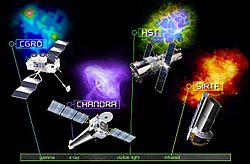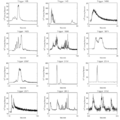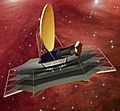Great Observatories program facts for kids
The Great Observatories program is four large, powerful space-based telescopes. They are a series of satellites placed by NASA. Each Space observatory has been important to astronomy.
- The Hubble Space Telescope (HST) looks at visible light and near-ultraviolet. It was launched in 1990. In 1997 ability to look at the near-infrared range was added. In 2009 there was a mission to service Hubble.
- The Compton Gamma Ray Observatory (CGRO) looks at gamma rays. It also looks at some hard x-rays as well. It was launched in 1991. It was deorbited in 2000.
- The Chandra X-ray Observatory (CXO) looks at soft x-rays. It was launched in 1999.
- The Spitzer Space Telescope (SST) looks at the infrared spectrum. It was launched in 2003.
Images for kids
-
Chandra, Hubble, and Spitzer composite image of the Crab Nebula (2009)
See also
 In Spanish: Grandes Observatorios para niños
In Spanish: Grandes Observatorios para niños

All content from Kiddle encyclopedia articles (including the article images and facts) can be freely used under Attribution-ShareAlike license, unless stated otherwise. Cite this article:
Great Observatories program Facts for Kids. Kiddle Encyclopedia.











